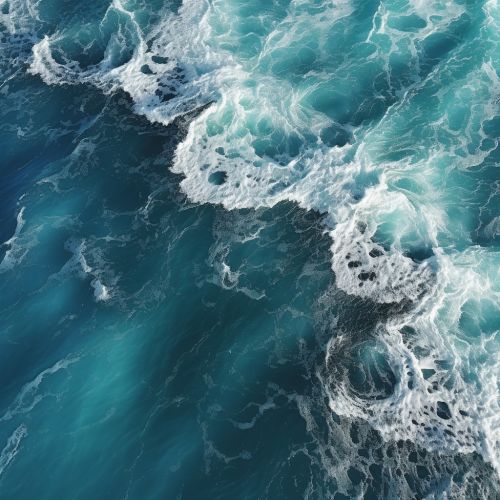Anticyclonic eddies
Introduction
Anticyclonic eddies are a type of oceanic eddy characterized by a rotation that is in the same direction as the Earth's rotation, which is clockwise in the Northern Hemisphere and counterclockwise in the Southern Hemisphere. These eddies are associated with the transport of heat and salt and play a significant role in the distribution of oceanic properties and the general circulation of the ocean.


Formation
Anticyclonic eddies are typically formed by the interaction of ocean currents with the seafloor topography, a process known as barotropic instability. They can also be formed by the wind-driven circulation of the ocean, particularly in regions where the wind stress curl is positive. The formation of anticyclonic eddies is a complex process that involves the interaction of various physical and dynamical processes in the ocean.
Characteristics
Anticyclonic eddies are characterized by their rotation, which is in the same direction as the Earth's rotation. They are typically warmer and saltier than the surrounding water, due to the upwelling of deep, warm, and salty water in the center of the eddy. The size of anticyclonic eddies can vary greatly, ranging from a few kilometers to hundreds of kilometers in diameter. They can persist for several months to a year and can travel long distances across the ocean.
Role in Ocean Circulation
Anticyclonic eddies play a significant role in the general circulation of the ocean. They contribute to the transport of heat and salt across the ocean, which is important for the global climate system. Anticyclonic eddies also play a role in the vertical mixing of the ocean, bringing deep, nutrient-rich water to the surface and promoting primary productivity.
Impact on Marine Life
Anticyclonic eddies can have a significant impact on marine life. The upwelling of nutrient-rich water in the center of the eddy can lead to increased primary productivity, supporting a rich ecosystem of phytoplankton, zooplankton, and fish. However, the strong rotation of the eddy can also trap marine organisms and transport them over long distances, which can have both positive and negative effects on marine ecosystems.
Research and Monitoring
The study and monitoring of anticyclonic eddies are important for understanding the dynamics of the ocean and the global climate system. Various methods are used to detect and track anticyclonic eddies, including satellite remote sensing, in-situ measurements, and numerical modeling. Research on anticyclonic eddies is an active area of oceanography, with ongoing efforts to improve our understanding of their formation, dynamics, and impacts.
